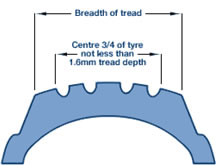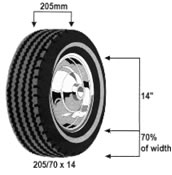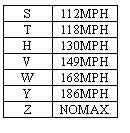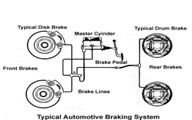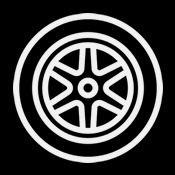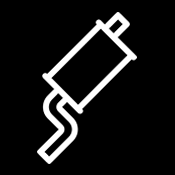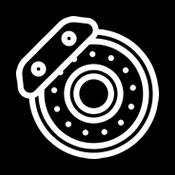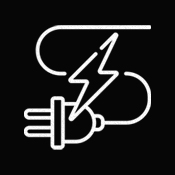Knowledge Base
Knowledge Base
At Best Autocentres we aim to provide solid, honest advice to keep you well informed and in control. That’s why we have take the trouble to put together a comprehensive knowledge base that provides all of the major points about your vehicle, the law and correct procedures.
Tyres and Wheels
Understanding The Tyre Law
Understanding The Tyre Law
The legal minimum tread depth for car tyres in the United Kingdom is 1.6mm throughout a continuous band comprising the central three quarters of the breadth of tread and around the entire outer circumference of the tyre.
Most car tyres have tread wear indicators which are small raised blocks in the main tread grooves, and when the tread surface becomes level with these blocks the tyre is at the legal limit and must be replaced.
The law applies to motor vehicles up to 3500 kg gross vehicle weight and cars and passenger vehicles with up to 8 passenger seats.
Best Autocentres offer a comprehensive range of quality tyres at competitive prices, contact us now.
UNDERSTANDING TYRE SIZES
UNDERSTANDING TYRE SIZES
It is no wonder that people get confused about tyre sizes when they are a mixture of
metric, imperial and percentage measurements.
In the diagram opposite the width of the tyre is 205mm from sidewall to sidewall. The diameter of the wheel rim is 14″ and the height of the tyre from the top of the Wheel to the top of the tyre (often called the profile) is 70% of the width of the tyre.
When converting to low profile performance tyres from standard tyres, it is important to remember that the overall height of the tyre must remain similar or else the circumference will change and alter the speedo and mileage readings. To achieve this, the wheel diameter must be increased to allow the profile to be decreased. i.e to change to a 60% profile on the example shown a 15” wheel would be required, and the tyre size would be 205/60×15
Best Autocentres offer a comprehensive range of quality tyres
at competitive prices, contact us now
TYRE SPEED RATINGS
TYRE SPEED RATINGS
The other important part of a tyre size is the load and speed rating. These take the form of two numbers and a letter i.e. 84T. The 84 is the load carrying capacity of the tyre, in this case 500 kg per tyre. This indicates that the overall weight of the car must not exceed 2000kg (500kg x 4 tyres). The T is the tyres maximum sustained speed code(see table).
Whilst it is not against the law to change the original specification, the speed rating of a tyre is usually used in relation to the performance of the car, therefore the original rating should be fitted in accordance with the car manufacturer’s recommendation. Failure to do so could void any warranty or insurance claim.
Best Autocentres offer a comprehensive range of quality tyres at competitive prices so contact us now for more details.
Wheel Alignment (Tracking)
Wheel Alignment (Tracking)
Misalignment of the wheels is usually caused when the front wheels hit potholes, speedhumps or the kerb. Noticeable signs of misalignment are, wear on the edges of both front tyres, the car may pull to one side or the steering wheel may be off centre.
All car wheels should be parallel when in motion, in the example shown the wheels are toeing in, this will cause the tyres to drag rather than roll, thus causing rapid tyre wear on the edges reducing the life of your expensive tyres.
It is important to regularly check the alignment, at BEST Autocentres we will check it free and only charge if it needs adjusting.
Contact us now to book your free wheel alignment check
Wheel Balance
Wheel Balance
It is important for all wheels to be balanced, this is usually done when new tyres are fitted.
It is virtually impossible to manufacture tyres and wheels without heavy spots.
When tyres rotate at speed any heavy spot is accentuated causing violent vibrations which can cause wear on other components and driver discomfort particularly through the steering wheel. This is most usually apparent when the car reaches speeds of around 70mph.
The problem is overcome by the use of weights attached to the wheel opposite the heavy spots.
Brakes
Understanding Brakes
Understanding Brakes
A typical braking system as shown, consists of disc brakes at the front and drum brakes on the rear connected by a series of metal pipes and hoses. Most new cars have disc brakes all round. When you step on the brake pedal, you are actually pushing against a plunger in the master cylinder which forces brake fluid through the connecting pipes to a braking unit at each wheel.
On a disc brake you have a rotating disc attached to the wheel which runs through a caliper with brake pads attached. When the foot pedal is depressed fluid pushes through the system and squeezes the brake pads onto the discs. The operation is very much the same as on a bicycle except that the calipers are operated hydraulically rather than via a cable. Drum brakes have a wheel cylinder where the hydraulic fluid pushes a small piston outwards in both directions which in turn pushes the brake shoes outwards against the drum in which they sit.
On both types of brake it is important to change the pads/shoes before they wear out. BEST Autocentres recommend that brake pads are changed when the friction material has worn down to 3mm and brake shoes are changed at
2mm. It is vital that brakes are replaced evenly across an axle, if only one side is replaced an imbalance will occur and the car will pull to one side on braking.
Understanding the Master Cylinder
MASTER CYLINDER
The master cylinder is located in the engine compartment and is typically actually two cylinders in one housing, each connected to two wheels. In this way if one side fails, you will still be able to stop the car. The master cylinder should be checked regularly to ensure the correct level of brake fluid is in the system. If the fluid is low the entire system should be checked for leaks.
VACUUM PUMP (BRAKE POWER BOOSTER)
The vacuum pump is usually mounted on the master cylinder and is directly connected to the foot pedal. Its purpose is to amplify the foot pressure applied to the brake pedal by drawing power from a vacuum created by the engine. The pump will only work whilst the engine is running which is why your brakes do not work so well with the engine off. To test the pump, put your foot hard on the brake pedal with the engine off, then turn on the engine and the pedal should depress slightly.
Understanding BRAKE FLUID
BRAKE FLUID
Brake fluid is a special oil designed to withstand very high temperatures.The most commonly used Brake fluid is DOT4 which is Hygroscopic. This means that it absorbs water. As the fluid becomes more and more contaminated with water the boiling point reduces (the fluid boils at 240c, water boils at 100c). When the degraded fluid starts to boil as your brakes get hot, air bubbles will appear in much the same way as in a boiling kettle, and when air gets in the braking system your brakes will take much longer to operate and the foot pedal will become spongy. BEST Autocentres will check your brake fluid boiling point free of charge, when it boils at 180c or lower it will need to be pumped out and replaced. Manufacturers recommend replacing brake fluid at least every two years.
Understanding ABS
ABS (ANTI LOCK BRAKING SYSTEM)
The system works by sensing abnormally fast deceleration of the wheel, such as in an emergency braking situation. The ABS limits the fluid pressure so as to avoid the wheel locking up and causing a skid. Under emergency braking the ABS will rapidly pump and shut off the fluid at more than ten times a second and you will feel a dramatic vibration on the foot pedal, this is normal and indicates the system is working. This should not be confused with brake judder under normal braking which would indicate a fault with the discs.
The ABS tests itself each time the ignition is turned on, if a failure is sensed the warning light on the dashboard will come on and the car should be checked immediately.
Understanding COMPENSATOR VALVE
COMPENSATOR VALVE
These valves are mounted between the master cylinder and the rear brakes and are designed to equalize the braking across the front and rear wheels. As you hit the brakes the weight of the car will be thrown forward on to the front wheels causing the front to need more braking pressure to stop them. The harder you brake the more the valve will limit the pressure on the rear brakes in order to minimize rear wheel lockup.
EXHAUST SYSTEMS
Exhaust systems have 3 main functions… to direct exhaust fumes away from the passengers… to improve engine performance… and to reduce noise.
Most modern cars have a catalytic converter at the front and one or more silencer boxes joined by shaped pipes, these are normally aluminised steel but can be replaced by stainless steel or coloured performance silencers.
Exhausts can corrode from inside and outside. Unlike most car components, exhausts will wear out quicker the less the car is used as the condensation inside the exhaust will lay in the system until the car is run and the exhaust gets hot.
A faulty exhaust will roar if it has a hole in it or the silencing baffles in the box have become detached.
Damaged exhausts will affect the performance and fuel economy of your car.
A hole in the exhaust system is an MOT failure Best Autocentres are exhaust specialists, why not contact us now for a free, honest discussion about how we can help you.
Understanding Clutches
Clutches
Basically, the clutch on a car is used to connect or disconnect the drive of the wheels from the constantly spinning engine.This is done by pushing a friction plate in the clutch on to the flywheel in the engine. As the clutch plate comes in to contact with the spinning flywheel the plate itself is forced to spin which in turn drives the connections to the road wheels. If the clutch plate is worn or has oil on it, it cannot grip the flywheel and will therefore not spin at the required speed and drive the wheels.
Common clutch faults are:-
Slipping- usually caused by leaked oil on the friction plate or worn friction plate
Difficulty with gear selection- possibly cable adjustment or sticking plate
Judder- usually warped or broken components.
Best Autocentres only fit quality new clutches, we do not recommend the fitment of reconditioned
clutches. If you think you may have a problem with your clutch, why not
get in touch now for a friendly, informal chat about the problem.
Understanding the Catalytic Converters
Catalytic Converters
Catalytic converters are now fitted to all cars to remove harmful emissions from the exhaust gases.
Although they often look like a normal exhaust silencer they are in fact a high tech device with ceramic cores and expensive catalysers incorporating platinum or palladium.
The catalytic converter will also normally have attached to it the Lambda sensor which measures the percentage of Oxygen in the exhaust gas and transmits information to the vehicles engine management system.
If the catalytic converter or Lambda sensor are not working correctly it is likely that the car will fail its MOT test due to an excess of harmful exhaust emissions. The car will also run poorly as the engine management system attempts to correct false information from the sensor.
Although catalytic converters are designed to have a long life expectancy and will not rust, they can be damaged if the engine is not properly
tuned and excess fuel or oils run through them. Due to their delicate ceramic insert they can also be damaged by sudden jolts such as vehicle impact or bump starting the car.
Long life or standard servicing
Standard or Long Life servicing
Some modern cars now have long life servicing regimes. These are generally set at 20,000 miles or two years but some hi tech engines monitor the engine oil quality and advise when a service is required with information on the dashboard. Long life servicing requires special oil and Irridium or Platinum Spark Plugs which are generally far more expensive. All cars can be run with long life or standard servicing options. This simply requires different oil and spark plugs
The benefit of long life is that you have your car serviced less regularly, however BEST Autocentres are not convinced this is a good thing as other components i.e. brakes are not checked as regularly.
BEST Autocentres recommend servicing annually, alternating between a Major Service one year and a Medium service the following year. If your car has not been serviced regularly or you don`t know its service history then we would always recommend a Major service first. We also do a minor service which is only recommended as a 6 monthly intermediate service between annual services for vehicles that do exceptionally high mileages.
We are able to service brand new vehicles that are under warranty without affecting the warranty. These will always be done to manufacturers specifications or in most cases higher, usually at a fraction of the prices charged by main dealers.
UNDERSTANDING Suspension & Shock Absorbers
Suspension & Shock Absorbers
There are many types of suspension fitted to modern cars. The most common type of suspension is the shock absorber combined with a coil spring. The coil springs are fitted to the vehicle under load and no attempt should be made to remove them without specialist equipment.
The coil spring also helps to absorb shocks and holds the car at its correct ride height. The actual shock absorber is in effect a hydraulic piston that constantly exerts a downward pressure forcing the tyre to have constant contact with the road. Without shock
The usual cause of Shock Absorber failure is leakage of the hydraulic fluid from its rubber seal. As with all rubber seals, they will perish with age and use. As the fluid level decreases the hydraulic pressure pushing the tyre to the road reduces and the wheel begins to bounce off the road causing reduced grip and braking and increasing uneven tyre wear. If one shock absorber is better than the other then one side of the car will have better grip and braking causing an imbalance, this is why shock absorbers should always be fitted in pairs. Most shock absorber manufacturers recommend changing shocks at 40,000 miles
Shock absorbers are checked for leaks on an MOT test but no test is currently made on their hydraulic effectiveness, The coil springs are also checked for damage on the MOT test. We also offer performance enhancements using uprated sports shock absorbers and/or lowering kits.
Understanding turbos
Turbocharges (turbos)
A turbo can significantly boost an engine’s horsepower without significantly increasing its weight.
Turbochargers are a type of forced induction system. They compress the air flowing into the engine. The advantage of compressing the air is that it lets the engine squeeze more air into a cylinder, and more air means that more fuel can be added. Therefore, you get more power from each explosion in each cylinder. A turbocharged engine produces more power overall than the same engine without the charging. This can significantly improve the power-to-weight ratio for the engine.
In order to achieve this boost, the turbocharger uses the exhaust flow from the engine to spin a turbine, which in turn spins an air pump. The turbine in the turbocharger spins at speeds of up to 150,000 rotations per minute (rpm) — that’s about 30 times faster than most car engines can go.
One little understood fact is that turbos work better in winter, this is because colder air is denser, therefore more air is squeezed into the cylinder which in turn enables more fuel to be added. This of course will decrease MPG.
Final point….. DO NOT DRIVE THROUGH PUDDLES….. Turbos are easily damaged by water and the air intake on most modern cars is close to the ground. Driving through puddles can also hydrolock your engine which generally wrecks it.
Understanding MOT TESTING
MOT TESTING
Understanding Coolant & Antifreeze
Coolant & Antifreeze
Most people understand the importance of oil in the engine, but most do not realise that the coolant and antifreeze are just as vital. Without Coolant a car engine would quickly overeheat and seize up resulting in costly repairs.
When the engine is running, the coolant circulates through it stopping it from overheating. After absorbing the heat, the coolant then circulates back through the radiator, normally located behind the front grill, and is then itself cooled by the fan and the air that enters through the grill when the car is at speed.
The coolant is predominantly water but needs an antifreeze additive to stop it freezing in cold weather. If it freezes it expands and could crack the engine block or cylinder head. Antifreeze also raises the boiling point of the coolant ensuring that it remains liquid for effective cooling. Most antifreeze solutions also contain a rust inhibitor.
coolant is normally added via the radiator cap or a seperate coolant reservoir, extreme care must be taken when removing the caps as pressurized steam can be emitted when it is still hot. You should also be aware when handling antifreeze that it is poisonous.
BEST Autocentres always check & top up the antifreeze as part of a full or Major Service, but we also offer a free check at any time if required
Understanding ADAS - Advanced driver assistance systems
ADAS
As time goes on you will hear more and more about ADAS systems on modern cars. Advanced Driver Assistance Systems are computerised systems utilising small cameras and satnav technology that assist drivers in everyday driving and ultimately are the systems that, put together, will lead to autonomous self driving cars.
over recent years many cars have been fitted with the fore runners of these systems including:- Adaptive cruise control, Anti lock braking systems and satellite navigation systems. More recently other systems are becoming common place:- Blind spot detection, Lane control, Road sign detection, Automatic headlight beam control, Automatic anti collision braking systems and even Automatic parking systems.
Most of these systems rely on an increasing number of camera or radar systems hidden within the structure of the vehicle and are increasingly vital to its safe operation. if your car has an accident or you are considering altering your car i.e adding lowered suspension or fitting oversized wheels, then you should always get the ADAS systems recalibrated to realign the cameras/radars. Failure to do so sould be very dangerous.
Understanding Auto BATTERIES
BATTERIES
Conventional car batteries are Known as Lead Acid. It is made up of several sections (cells) that each have one lead plate(negative) and one lead dioxide(positive) plate which are submerged in Sulphuric acid. When the ignition is switched on it creates a chemical reaction that produces electons which in turn create electricity for the starter motor, lights, radio etc.
WHY DO BATTERIES FAIL Batteries are susceptible to failure in both and cold weather. Low temperatures slow the chemical reaction and at 0c a battery is 30% less effective and added to the degradation of the plates over time this may not be enough to crank the engine. Extreme heat accelerates the break up of the negative plates and increases the evaporation of the acid as well as increasing the discharge rate.Overheating can also be caused by overcharging by the vehicle charging system. Plate sulphation decreases the efficiency of the chemical reaction in the battery and this occurs far more when either the vehicle is not used for a period of time or the vehicle charging system is undercharging. BEST Autocentres can quickly check the state of the battery and the charging system, this can pre-empt inconvenient starting problems. Most manufacturers guarantee batteries for 3 years.
ELECTRIC VEHICLE BATTERIES EV batteries are very different to conventional car batteries as they are used to drive the vehicle as opposed to just starting it. Currently most EVs use lithium-ion batteries. These work similarly to leadacid batteries but instead of the lead plates they use lithium cobalt for the positive plate and carbon for the negative and various electrolytes I.e lithium salt solution are used instead of Sulphuric acid. In order to have enough power to drive the vehicle EV batteries need to be much bigger and therefore Lithium ion batteries are much more suitable as they are considerably lighter and can generate more electricity. EV batteries are likely to last approximately 10 years and most manufacturers guarantee them for 100,000 miles which is good because EV batteries can cost in excess of £1000. Some car manufacturers are currently experimenting with solid state batteries. The main difference is that the electrolyte used in LA & Li batteries is liquid but in solid state batteries it is solid. It just so happens that this change improves nearly all the battery’s characteristics. Solid-state batteries tick all the boxes of our fantasy battery tech. They’re lightweight, have a low environmental impact, use plentiful components, are less likely to catch fire, and offer more power. The downside to SS is that the components and manufacturing process are extremely expensive
Of course, no library could never replace real conversation with an experienced professional, so if you want to have a friendly, honest chat about your motoring needs, please feel free to contact us.
Additional Services
Winchester
Unit 8
Winchester Trade Park
Winnall
Winchester
Hampshire SO23 7FA
Call: 01962 866977
Email: Click to Email Us
Interactive Map: Google Maps
Facebook: Click for Facebook
Eastleigh
Unit 6
Barton Farm Industrial Estate
Chickenhall Lane
Eastleigh
Hampshire SO50 6RP
Tel 02380 620200
Email: Click to Email Us
Interactive Map: Google Maps
Facebook: Click for Facebook
Totton
Unit 10
Calmore Industrial Estate
Eddystone Road
Totton
Hampshire SO40 3SA
Call: 02380 868234
Email: Click to Email Us
Interactive Map: Google Maps
Facebook: Click for Facebook
